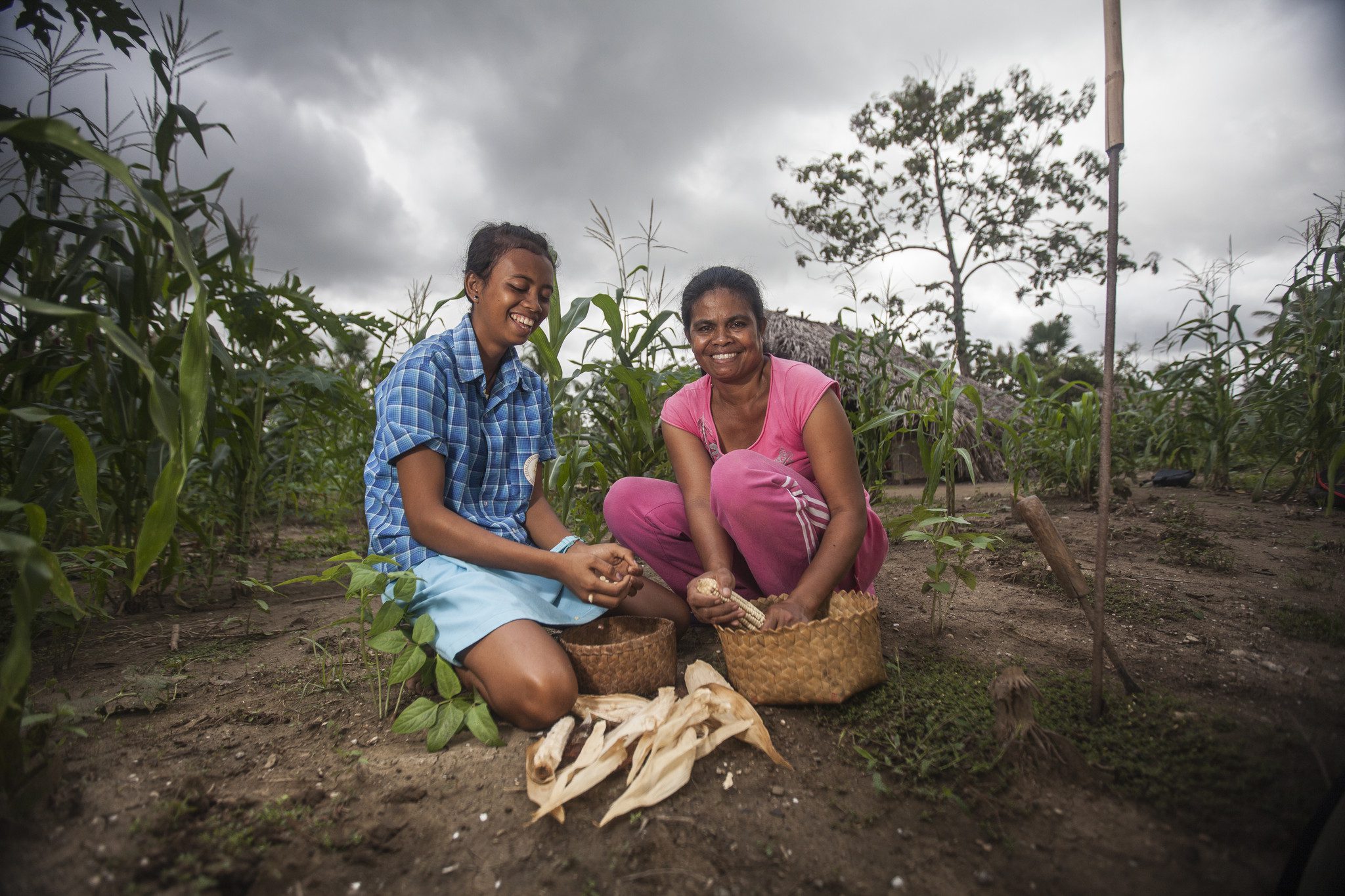
By Glenda Lasslett, Timor Leste Country Director
The United Nations Sustainable Development Summit will be held in New York next month and has the potential to change the lives of people around the world.
Timor-Leste (East Timor) is very long way from New York in almost every sense of the word. It’s a long way geographically, culturally, climatically and economically. But as is all too common in our world, what happens in meetings in far off places — such as at the United Nations Sustainable Development Summit — will have a tremendous impact on many small communities, including those in Timor-Leste.
I’ve just returned from one such community: the village of Ulas in Oecusse. Facing escalating impacts of climate change, the situation for villagers would be much more difficult if it wasn’t for the work that’s flowed from the implementation of the Millennium Development Goals agreed in 2000.
It is a long and bumpy road to reach Ulas, and almost everywhere you look the earth is parched. Already burnt by the sun, villagers can expect many more months without rain before the arrival of the wet season. But that relief could be short-lived, with climatologists predicting an approaching El Nino event that will delay and shorten the much-needed ‘wet’.
Without support, the longer-term prognosis for communities like Ulas is no better.
Analysis of data provided by the IPCC and CSIRO shows we can expect the overall temperature in Timor-Leste to increase by 1.3°C, and the total annual rainfall to decrease around 12%, over the next 35 years. For water scarce Oecusse, that difference could have devastating impacts on rural communities.
But there is hope. As I bounce along in the vehicle, the clouds of dust part to reveal a green field in the distance. Clearly Ulas does have some access to water then — and with the assistance of a multi-agency Climate Change Adaptation Program; delivered by Oxfam, Caritas and the Catholic Relief Service — is still managing to grow food despite the dry conditions.
As a result of this adaptation program, villagers no longer use slash-and-burn cultivation techniques, but are instead building permanent gardens and extending the use of simple agricultural practices such as mulching, composting, use of organic pesticides, raised seed-beds, terracing, ‘living’ fences and taking measures to protect their water sources. All to great effect with the result being improved crops and food security.
After climbing a nearby hill to see the all-important water source that maintains this green oasis, I’m told how resources are still needed to reduce water loss and provide sufficient pressure for piped irrigation to the nearby fields. The community has done its homework. They just need support to extend their work, including improvements to their dam. More walking, then we gather for a lunch of boiled cassava, young coconuts and Timor coffee. It’s cool here because of the trees and a small spring. The leaders talk about their dreams for water, for fish, for better crops, access to markets and a future for their families. They are ready to make these small dreams come true with a little support from global governments who need to put climate change on the agenda and from agencies like Oxfam who are ready to provide climate adaptation training.
What happens in New York really does matter
Will the support be there? We know climate change adaptation programming works, but will there be funding to support it? Will governments prioritise the environment?
What happens in faraway New York really does matter. The Sustainable Development Goals will be the new agenda, hopefully building on the poverty-busting work of its predecessor: the Millennium Development goals.
Our partner communities in Oecusse are already facing up to the challenges of climate change. Let’s hope that world leaders do their bit, acknowledge their responsibility and show their generosity as they develop the new Sustainable Development Goals next month.
Because what they decide in New York will have a huge impact in Timor-Leste. For this reason, it’s important that Australia’s Prime Minister is there.